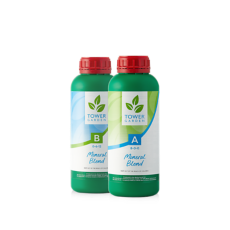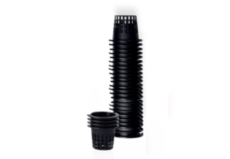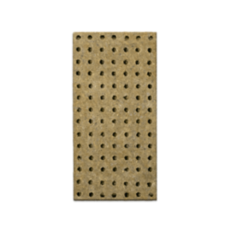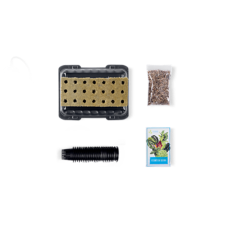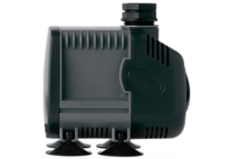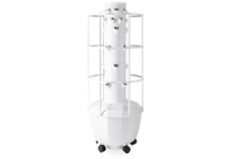How to Grow Strong, Healthy Seedlings in 7 Steps
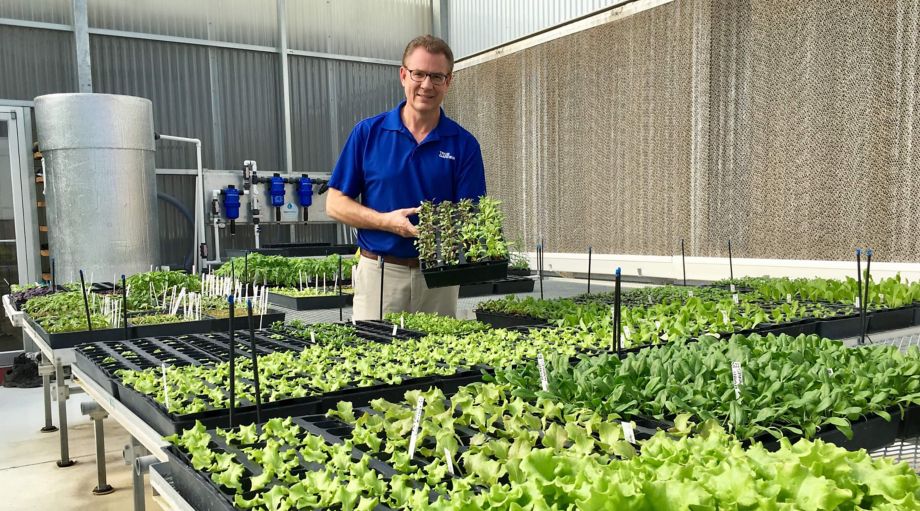
Part of setting your garden up for success means starting with high-quality seeds for healthy seedlings.
Tower Tip: Your Tower Garden arrived with everything you need to get started, including seeds.
7 Steps of Growing Spectacular Seedlings
1. Decide The Best Time to Plant Your Seeds
Of course, you can start seeds for an indoor Tower Garden anytime. But for outdoor growing, timing is a big deal. Start your crops too early, and an unexpected frost might kill them. Start too late, and they might not have enough time to mature.
Fortunately, seed packets often include planting schedules. If yours don't, we recommend searching for a planting calendar for your region.
2. Gather Your Supplies
First, of course, you’ll need the seeds.* You can order high-quality seeds online — or from seed catalogues. (Buying online can also let you see reviews from other gardeners.) Local garden shops and seed swaps are also great sources.
Wherever you get them, you’ll want to use relatively fresh seeds. After a year or two, most don’t germinate as well, especially if they haven’t been stored in a cool, dark place.
Besides seeds, it’s helpful to have:
- A seedling tray* (a dark food storage container or glass baking dish will also do)
- A propagation dome* (or plastic wrap)
- Rockwool cubes and vermiculite*
- Grow lights
- A small fan
- An outlet timer
*If you’re using the Tower Garden Seedling Starter Kit, the seeds, seedling tray and dome, rockwool cubes, and vermiculite are included.
When reusing trays and other supplies, make sure to clean everything well to make sure you don’t expose your seedlings to disease.
3. Plant Your Seeds
Soaking your seeds overnight in a shallow bowl of water can improve and speed up germination rates. You can skip that step for smaller seeds, like lettuce and greens — they’re easy to lose, and they usually sprout well anyway.
Before planting your seeds, soak your rockwool cubes for 30 minutes or so. Then plant the appropriate number of seeds based on the instructions on each of the individual seed packets.
Once you’ve planted the seeds, fill each rockwool cube seed hole with dry, coarse-grade vermiculite. (For smaller seeds, fill the holes only halfway.) This ensures seeds have enough moisture to germinate.
Tower Tip: Some seeds can be sown directly into your Tower Garden, rather than waiting for them to sprout for transplanting. These include plants that grow very quickly after germinating, such as beans, cucumbers, and squash.

4. Provide The Ideal Germination Conditions
- Once you’ve planted your seeds, it’s time to make them comfortable: Most leafy greens and herbs germinate well in the 55–75°F (13–24°C) range, and fruiting crops usually prefer the upper end of that range
- A heating mat may help if you’re germinating seeds somewhere cooler
- Consider covering your seedling tray with the dome or plastic wrap until the seeds sprout to help create a warm, humid microclimate
- Once your seeds have germinated, turn off the heating mat and remove the dome or plastic wrap to discourage diseases from breeding
5. Keep Your Seedlings Healthy
How much water do your plants need? Basically, you want to keep your rockwool cubes damp but not oversaturated. Replace water in the seedling tray with about 1 cm of fresh water daily.
Start giving your seeds lots of light as soon as you see something green peeking out. Keep in mind that a window — even a big, south-facing one — likely won’t be enough, especially in winter. If it’s too cold to move your plants outside in the sun, grow lights are the way to go. Seedlings typically grow best with 14–16 hours of daily grow light exposure. (An outlet timer comes in handy here.)
After the first few weeks, your seedlings will need you to provide nourishment. When you see true leaves — the ones that come after the first pair formed inside the seed — start adding a few drops of Mineral Blend A and Mineral Blend B every other day to the water to supplement your plants’ diet.
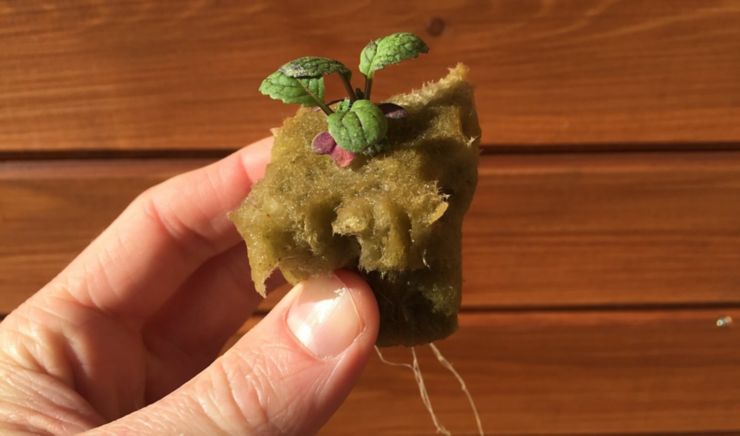
6. Make Your Seedlings Strong
To prepare your seedlings for the great outdoors (assuming you’re not planning to keep them inside), you need to toughen them up a little. To do that, routinely “pet” them (as you would a small animal) and/or set a fan to gently blow on them. This makes plants stockier to help them better resist the elements. It also promotes air circulation around your plants, preventing plant diseases.
Plants like tomatoes, squash, and peppers tend to benefit from thinning and being limited to one plant per rockwool cube, whereas you can usually grow multiple plants per cube for most herbs and greens. It’s time to thin (with a sharp pair of shears) when your seedlings have a few pairs of leaves.
7. Transplant!
When your seedlings are about 7 cm tall and have roots protruding from the bottom of the rockwool cubes, it’s time to transplant. For indoor and outdoor growing, put each of the rockwooled seedlings into a net pot and gently push into the grow ports of your Tower Garden until they snap in. The net pots must be placed properly in the grow ports to ensure proper water and nutrients reach the plants.
If you’ve grown your seedling indoors and are moving them outdoors, harden off your seedlings about a week before transplanting. Just expose your seedlings to the outdoors every day for that week: 1–2 hours the first day, 3–4 hours the second day, and so on. Hardening off prevents delayed development caused by shock, which can occur when seedlings move from the controlled indoor environment to the great outdoors. Then slot your new, happy, hardened seedlings into your Tower Garden.
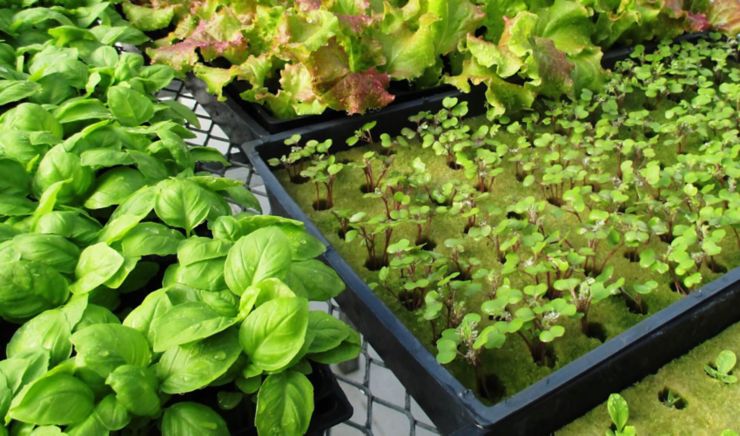
Now it’s time to watch their growth explode. Enjoy!
Thanks ATL Urban Farms, one of our certified Tower Farms, for sharing these tips to grow the best seedlings!


